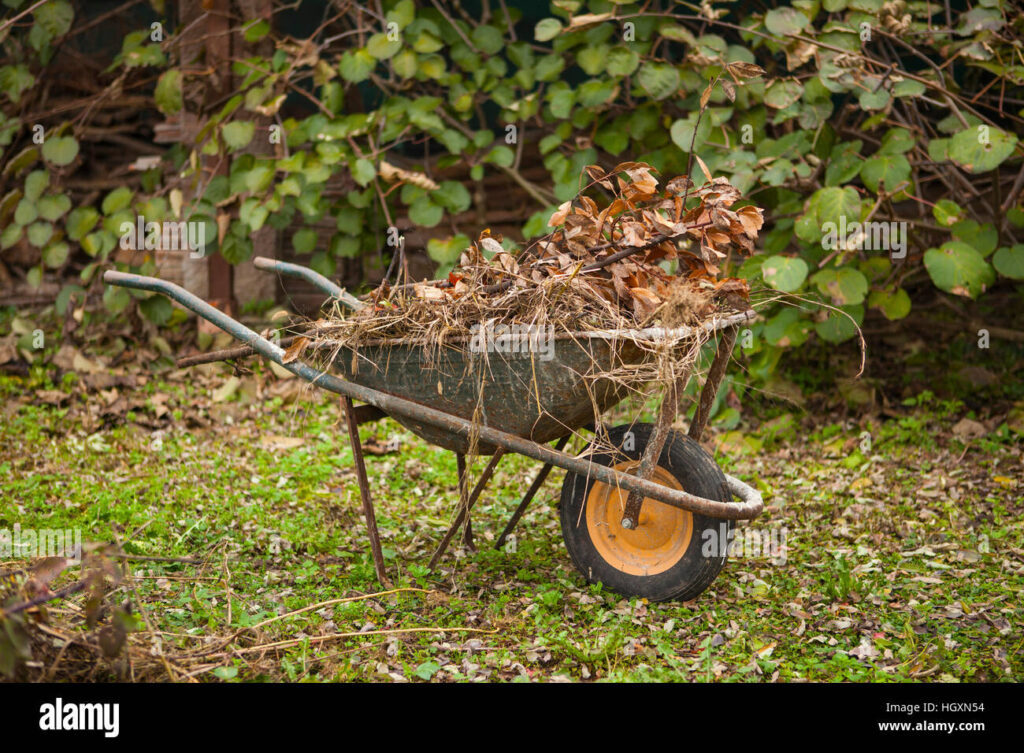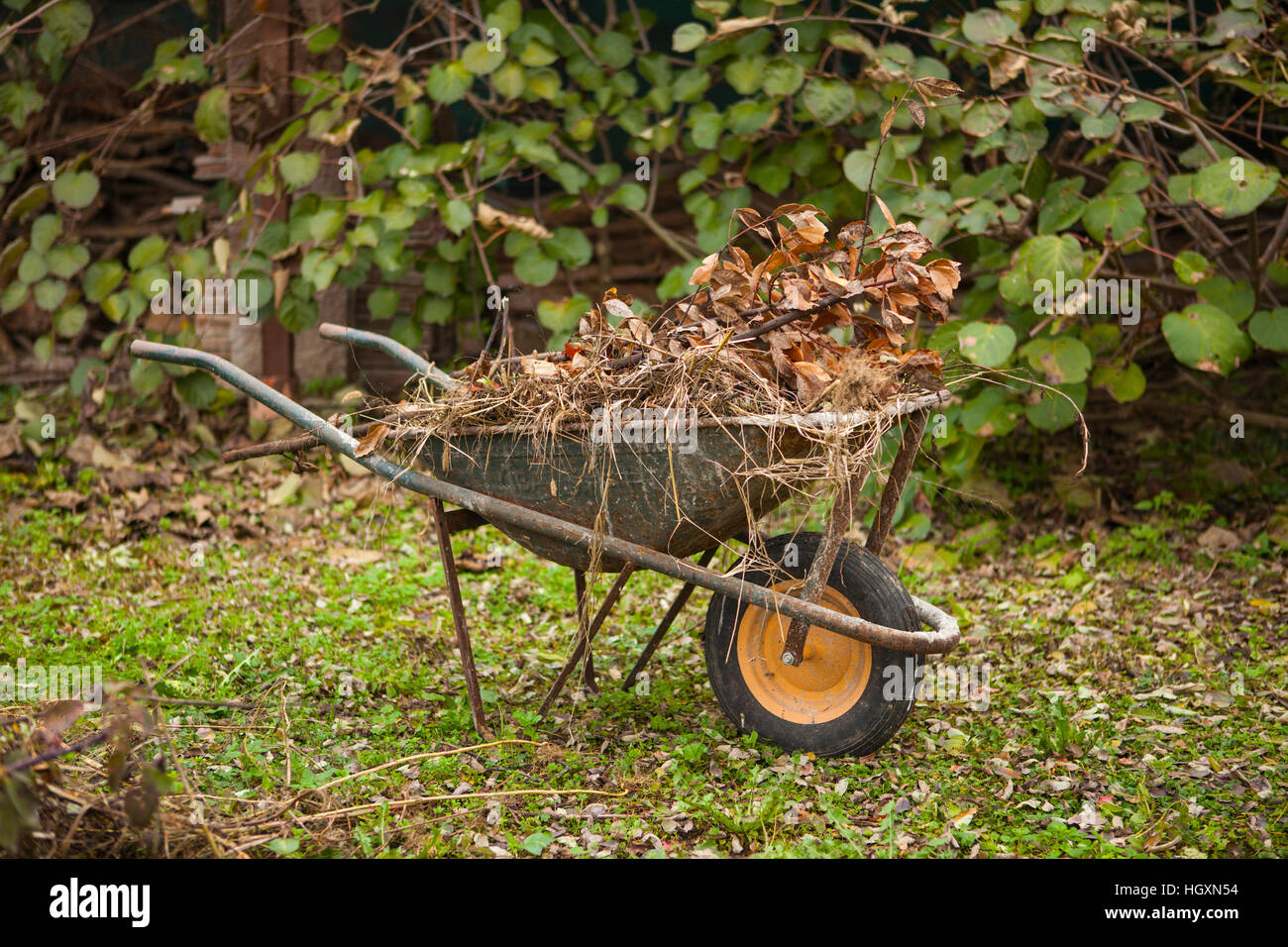
Breathing New Life into a Rusty Wheelbarrow: Restoration and Prevention
A rusty wheelbarrow sitting in the corner of your garden shed isn’t just an eyesore; it’s a sign of neglect and a potential safety hazard. But don’t despair! A rusty wheelbarrow can often be restored to its former glory with a little elbow grease and the right techniques. This article will guide you through the process of restoring a rusty wheelbarrow and, more importantly, preventing rust from taking hold in the first place. We’ll explore various methods, from simple cleaning to more involved repairs, ensuring your rusty wheelbarrow becomes a reliable tool once again.
Assessing the Damage to Your Rusty Wheelbarrow
Before diving into the restoration process, it’s crucial to assess the extent of the rust damage. Is it just surface rust, or has the rust penetrated deeper, weakening the metal? Examine the wheelbarrow carefully, paying attention to the following:
- Surface Rust: This is the most common type and appears as a reddish-brown discoloration on the surface of the metal. It’s usually relatively easy to remove.
- Pitting: This occurs when rust eats into the metal, creating small pits or holes. Pitting can weaken the metal and make it more susceptible to further corrosion.
- Structural Damage: Look for signs of significant rust damage that has compromised the integrity of the wheelbarrow, such as holes, cracks, or severely weakened metal. In such cases, repair may be more challenging or even impractical.
Essential Tools and Materials for Wheelbarrow Restoration
Gathering the right tools and materials will make the restoration process much smoother and more efficient. Here’s a list of essentials:
- Wire Brush: A sturdy wire brush is essential for removing loose rust and debris.
- Sandpaper: Various grits of sandpaper (coarse, medium, and fine) will be needed for smoothing the surface and removing stubborn rust.
- Rust Converter: A rust converter chemically transforms rust into a stable, paintable surface.
- Metal Primer: Primer helps to create a smooth, even surface for the paint to adhere to and provides additional rust protection.
- Metal Paint: Choose a durable metal paint that is designed to withstand outdoor conditions.
- Safety Glasses and Gloves: Protect your eyes and hands from rust particles and chemicals.
- Dust Mask: A dust mask will protect you from inhaling rust particles and paint fumes.
- Optional: Power drill with wire brush attachment, rust remover solution, welding equipment (for structural repairs).
Step-by-Step Guide to Removing Rust from a Wheelbarrow
Now, let’s get down to the nitty-gritty of removing rust from your rusty wheelbarrow. Follow these steps for best results:
- Cleaning: Begin by thoroughly cleaning the wheelbarrow with soap and water to remove any dirt, grease, or loose debris.
- Wire Brushing: Use the wire brush to scrub away as much loose rust as possible. Apply firm pressure and work in a back-and-forth motion.
- Sanding: Start with coarse-grit sandpaper to remove stubborn rust and smooth out any rough areas. Gradually move to finer grits to refine the surface.
- Rust Converter: Apply a rust converter to any remaining rust. Follow the manufacturer’s instructions carefully. The converter will transform the rust into a stable, paintable surface.
- Cleaning Again: Once the rust converter has dried, clean the wheelbarrow again to remove any residue.
Repairing Structural Damage on Your Rusty Wheelbarrow
If your rusty wheelbarrow has suffered structural damage, such as holes or cracks, you’ll need to address these issues before painting. Minor holes can be patched with metal filler or epoxy. Larger holes or cracks may require welding. If you’re not comfortable welding, it’s best to take the wheelbarrow to a professional welder. Properly repairing structural damage will significantly extend the life of your rusty wheelbarrow.
Painting Your Wheelbarrow for Protection and Aesthetics
Once the rust has been removed and any structural repairs have been made, it’s time to paint your wheelbarrow. Painting not only improves the appearance but also provides a protective barrier against future rust. Follow these steps for a professional-looking finish:
- Priming: Apply a coat of metal primer to the entire surface of the wheelbarrow. Primer helps the paint adhere better and provides additional rust protection. Allow the primer to dry completely according to the manufacturer’s instructions.
- Painting: Apply two coats of metal paint, allowing each coat to dry completely before applying the next. Choose a durable metal paint that is designed to withstand outdoor conditions. Consider using a paint with rust inhibitors for added protection.
- Optional: Apply a clear coat for extra protection and a glossy finish.
Preventing Rust: Maintaining Your Wheelbarrow
The best way to deal with rust is to prevent it from forming in the first place. Here are some tips for maintaining your wheelbarrow and preventing rust:
- Store it Properly: Store your wheelbarrow in a dry, covered location when not in use. This will protect it from rain and moisture, which are major contributors to rust.
- Clean it Regularly: After each use, clean your wheelbarrow with soap and water to remove any dirt, mud, or debris.
- Apply a Protective Coating: Periodically apply a protective coating, such as WD-40 or a rust inhibitor, to the metal surfaces of the wheelbarrow.
- Inspect Regularly: Regularly inspect your wheelbarrow for signs of rust and address any issues promptly. Early detection and treatment can prevent minor rust from becoming a major problem.
- Consider Galvanization: If you are purchasing a new wheelbarrow, consider one that is galvanized. Galvanization is a process that coats the metal with a layer of zinc, which provides excellent rust protection.
Alternatives to Chemical Rust Removal
While chemical rust removers and converters are effective, some people prefer more natural or less harsh methods. Here are a few alternatives:
- Vinegar: Soaking rusty parts in vinegar for several hours can help loosen rust.
- Baking Soda: Make a paste of baking soda and water and apply it to the rust. Let it sit for a while, then scrub it off.
- Lemon Juice and Salt: Combine lemon juice and salt to create a natural rust remover. Apply it to the rust, let it sit, and then scrub it off.
- Electrolysis: This method uses an electric current to remove rust. It requires some specialized equipment and knowledge.
The Environmental Impact of Rust Removal
It’s important to consider the environmental impact of your rust removal methods. Chemical rust removers can contain harsh chemicals that are harmful to the environment. When using these products, follow the manufacturer’s instructions carefully and dispose of them properly. Consider using more natural alternatives whenever possible. Proper disposal prevents environmental contamination. [See also: Environmental Impact of Metal Restoration]
When to Replace Your Rusty Wheelbarrow
Despite your best efforts, there may come a time when your rusty wheelbarrow is beyond repair. If the rust damage is too extensive, the metal is severely weakened, or the cost of repairs outweighs the cost of a new wheelbarrow, it may be time to replace it. Consider the long-term cost savings of investing in a durable, high-quality wheelbarrow that will last for many years. A rusty wheelbarrow, if too far gone, simply isn’t worth the risk. [See also: Choosing the Right Wheelbarrow for Your Needs]
The Satisfaction of Restoring a Rusty Wheelbarrow
Restoring a rusty wheelbarrow can be a rewarding experience. Not only do you save money by avoiding the need to purchase a new wheelbarrow, but you also get the satisfaction of bringing an old tool back to life. With a little effort and the right techniques, you can transform a rusty wheelbarrow into a valuable asset for your gardening and landscaping projects. The feeling of accomplishment after restoring a rusty wheelbarrow is truly unmatched. Plus, you’ve prevented more waste! [See also: DIY Garden Tool Restoration Projects]
Conclusion: Giving Your Rusty Wheelbarrow a Second Chance
Don’t let a rusty wheelbarrow become a forgotten relic in your shed. With the right tools, techniques, and a bit of perseverance, you can restore your rusty wheelbarrow to its former glory and prevent future rust from taking hold. By following the steps outlined in this article, you can give your rusty wheelbarrow a second chance and enjoy its usefulness for many years to come. So, get out there, grab your tools, and start breathing new life into that rusty wheelbarrow!

